Greenland ice a speedy chute to rising seas?
As I checked through the news agencies to keep tabs on what’s been happening with Greenland as 2016 kicks off, the only agency piece I came across is a German story (on AFPD) on how climate change is apparently bringing the world’s biggest island an “economic upswing”. New fish species off the coast, better conditions for agriculture and exportable powdered rock from retreating glaciers are listed amongst the benefits.
No mention of a study published in Nature Climate Change this week showing that recent atmospheric warming – especially the exceptional summers in 2010 and 2012 – are reducing the ability of some layers of the giant ice sheet to store meltwater. That, in turn, can mean runoff is released into the ocean faster than previously assumed, rushing down a kind of icy chute. Clearly, this has considerable implications for global sea level rise.
Snow sponge
Approximately half of Greenland’s current annual mass loss is attributed to runoff from surface melt. At higher elevations, the melt does not necessarily equal runoff, because meltwater can refreeze in the porous snow and firn near the surface. Horst Machguth from the Geological Survey of Denmark and Greenland, the lead author of the study, explains the background in a news release by CIRES, the Cooperative Institute for Research on Environment Sciences, Boulder Colorado: “The near-surface of the large ice sheet interior is comprised of snow that is slowly being converted into glacier ice. This porous firn layer can be up to 80 m thick,” he writes. Recent studies indicated that this firn is an important buffer against contributing to sea level rise for decades to come, because it absorbs and stores the meltwater like a sponge, refreezing it to form ice layers as it percolates down from the ice sheet surface. But the authors say the new study shows this may not be the case.
VIEW: Animated graphic illustrating the “sponge” effect on the Greenland Ice Sheet by NASA and CIRES
After the Greenland Ice Sheet was hit by a series of warm summers, it was unknown how the firn reacted to exceptional amounts of meltwater, says Machgut. The research aimed to clarify whether the firn was indeed capable of retaining the meltwater, or whether the sponge had been “overwhelmed” by all the extra water.
Icy chute
The scientists drilled cores to sample the firn at sites where similar cores had been drilled 15 to 20 years ago. They found that the amount of refrozen ice layers in the firn had increased substantially over the past two decades in many places, but not everywhere. Cores drilled at lower elevations suggested the recent exceptional meltwater amounts had only trickled through to shallow depths within the firn, conglomerating into massive ice layers directly below the ice sheet surface.
“It appears that the firn was overwhelmed by the melt to a degree where so many ice lenses had formed that they started to hinder percolation of further meltwater. Initially small ice lenses grew to form ice layers of several meters in thickness that act as a lid on top of otherwise sponge-like firn. Radar measurements identified that these massive ice lenses were continuous over tens of kilometres,” says Dirk van As, a co-author of the study from the Geological Survey. “Surface meltwater wants to refreeze in firn locally, which it does at higher elevation, but at lower elevations it hits that lid of ice and is forced to stay at the surface where it cumulates.”
Satellite images show that meltwater then formed rivers on the surface flowing towards the margin of the ice sheet.
More data required
“In contrast to storing meltwater in porous firn, this mechanism increases runoff from the ice sheet,” says CIRES researcher Mike MacFerrin, a second author on the study. “This process has not previously been observed in Greenland. The extent of this ice lid capping the ice sheet firn remains unknown. For this reason, the total amount of additional ice sheet runoff associated with this newly observed process cannot yet be quantified.”
The scientists are now combining their core data with radar measurements from NASA, which cover the entire ice sheet. They say similar changes in firn structure have been observed on various ice caps in the neighbouring Canadian Arctic, which indicates the phenomenon could be widespread in Greenland. Only west Greenland was covered by the new study.
The Greenland ice sheet is already a great concern, with the melting ice rate increasing continually as the atmosphere and the oceans warm. As well as contributing to rising sea levels, the increase in runoff from the ice sheet could also result in feedback processes which could lead to even more melt in the future. The water running down the ice sheet can create darker, slushy channels, the scientists say, which can reduce the albedo effect of the ice sheet, its ability to reflect sunlight away from its surface. As more sunlight is absorbed instead of being reflected off, the surface temperature could warm further.
Given the huge significance of the Greenland ice sheet in terms of global sea level rise and its role in the global climate system, the findings of this study deserve a little more attention than being confined to the publications of the scientific communities.
But maybe potatoes from the “ice island” and mackerel and tuna off its snow-tipped coasts make for more striking headlines?
Can Paris avert climate threat to cryosphere?
To those of us who work on polar subjects, there is no question about the relevance of the cryosphere to the annual UN climate negotiations. But in the run-up to the annual mega-event – especially in a year dubbed by some to be the “last chance” for climate – it was not easy to get attention for the Arctic, Antarctic and high-altitude peaks and glaciers of the world.
I had a discussion with some of my colleagues who focus on Africa and Asia. With problems like political unrest, wars, famine and drought to cope with, the fate of polar bears, one told me, is completely irrelevant.
You could say this colleague is suffering from a kind of tunnel vision. But it also prompts me to wonder whether the way we communicate the threat of climate change is partly to blame.
Not just polar bears
Earlier this week I read about a study indicating that people were more likely to donate to campaigns which focus on people, on social injustice rather than on conservation and environmental degradation. Somehow, we journalists have to make the connection between the two. When you remind people that increasing sea levels caused to a large extent by changes in our ice sheets pose a huge threat not only to small island states but to many of the world’s megacities, the cryosphere takes on a new relevance. Not to mention the fact that the ice, snow and permafrost covered regions of our planet play a major role in regulating the world’s climate and water supplies.
One organization that works to bring the attention of delegates at the UN climate talks to our icy regions is the International Cryosphere Climate Initiative, ICCI. In time for this year’s COP21, it commissioned a report from leading scientists: “Thresholds and closing windows. Risks of irreversible cryosphere climate change”. The report summarizes the levels of risk in five key areas: ice sheets loss and related sea-level rise, polar ocean acidification, land glacier loss, permafrost melt, and the loss of Arctic summer sea ice. The report is based on the last IPCC assessment plus literature published in the three years since.
Bringing the ice closer
Pam Pearson is the director and founder of ICCI. I have interviewed her on various occasions, including during visits she made to Bonn, the home of the UNFCCC, to brief delegates. This time we were not able to meet in person, but we have been in Email contact. I asked her how difficult it was to arouse interest within the negotiations at the moment, with so much going on. She told me it was difficult mainly because very few people globally actually live near cryosphere.
“Yet we are all deeply connected to these regions, because of their role in the Earth climate system — especially through sea-level rise, water resources from land glaciers, and permafrost release that will make it harder to meet carbon budgets. “
The Arctic, parts of Antarctica and many mountain regions have already warmed two to three times faster than the rest of the planet, between 2 and 3.5 degrees Celsius up on pre-industrial levels. Climate change is also affecting high altitude areas such as the Himalayas and the Andes, where seasonal glacier melt provides water for drinking and irrigation, especially in dry periods.
When the outside risk becomes the norm
The changes are far more extreme than those forecast in even the most pessimistic scenarios of a few years ago. In the IPCC’s 2007 Fourth Assessment, the outer extreme estimate for sea level rise (mostly from glacier ice melt) was about one meter by the end of this century. Today, the experts say even if we could halt warming now, it would be impossible to avoid sea-level rise of one meter from glaciers, ice sheets and the natural expansion of warming waters, within the next two hundred years. Most scientists also agree that the West Antarctic ice sheet has already been destabilized by warming to the extent where this probably cannot be halted, which will increase sea level further.
Pearson used to be a climate negotiator herself, so she knows the pressures and constraints. She told me that while participants in the climate conferences were broadly aware of issues like ice melt at the poles and on high-altitude glaciers, they tended to lack awareness of two key aspects:
“First, that we have already passed, or are close to passing temperature levels that will cause certain processes to begin; and second, that some of these processes cannot be stopped once they get started.”
She says a “sense of urgency” is lacking, and stresses that although some of the most damaging consequences will only occur in hundreds or even thousands of years, they will be determined by our actions or inactions in the coming few decades. That includes the 2020-30 commitment period that is the focus of the agreement being worked on in Paris Pearson stresses.
The cryosphere needs more ambitious targets
The report analyses the implications of the INDCs, or current pledges put on the table by the countries of the world for the Paris climate talks. The scientists come to the conclusion that these will not be enough to prevent the onset of many irreversible cryosphere processes.
Even the two-degree pathway agreed by the international community translates into a peak cryosphere temperature of between 4 and 7 degrees above pre-industrial levels, according to the ice experts. Yet the UN and others say current commitments would lead to global temperatures 2.7 to 3.5 degrees Celsius above pre-industrial levels by 2100, rising later to between 3.4 and 4.2 degrees. The peak in global carbon emissions would occur well after 2050. The associated temperatures would trigger permanent changes in our ice and snow that cannot be reversed, including the complete loss of most mountain glaciers, the complete loss of portions of West Antarctica’s Ice Sheets and parts of Greenland. This would ultimately equate to an unstoppable sea level rise of a minimum four to ten meters, the scientists find.
In addition, the increase of CO2 being absorbed in the Southern Ocean around Antarctica and the Arctic Ocean is turning the water more acidic and so threatening fisheries, marine ecosystems and species.
Another of the key issues which is often neglected is that of permafrost. About a quarter of the Northern Hemisphere’s land area contains ground that remains frozen throughout the year. This holds vast amounts of ancient organic carbon. So when it thaws, carbon dioxide and methane are released, which fuel further warming. Even a temperature rise of 1.5 degrees could result in a 30% loss of near-surface permafrost. This would mean 50 Gigatonnes of additional carbon emissions by 2100. Given that the total carbon budget allocated to a two-degree temperature rise is only 275 Gigatonnes, that would be a huge factor. The ICCI experts say this thaw would not be reversible, except on geological time scales.
Dwindling Arctic sea ice
Arctic summer sea ice has declined rapidly, especially since 2000. Only about half the sea ice survives the summer today compared to 1950. This is “both a result and a cause of overall Arctic and global warming”, according to the ICCI report. White ice reflects heat into space. When it melts, it is replaced by dark water, which absorbs the heat, exacerbating warming further.
The Arctic sea ice has a tempering effect on global temperatures and weather patterns. It would only be possible to reverse the disappearance of the ice in summer with a return to regular global temperatures of 1 to 2 degrees above pre-industrial times, according to the report.
Andes and Himalayas
Receding mountain glaciers in the European Alps, American Rockies, Andes and East Africa were among the first identified, visible impacts of climate change, originally from natural factors. Sometime in the past 50 years, anthropogenic climate change surpassed natural warming as the main driver of retreat, and caused about two-thirds of glacier melt between 1991 and 2010, according to the ICCI report.
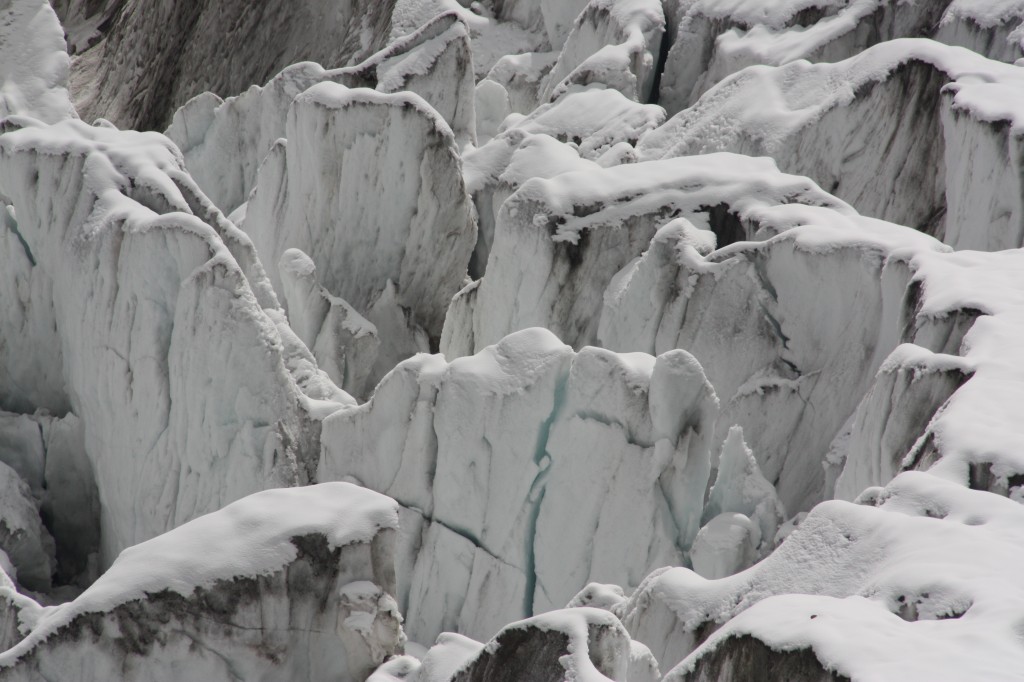
Glaciers – beautiful but highly endangered, like this one I visit regularly in the Swiss alps. (Pic. I.Quaile)
Glaciers are important to nearby communities as a source of water for drinking or irrigation. Some are especially important in dry seasons, heat waves and droughts. Melting glaciers provide an increase in water for a limited time. But ultimately, the lack of water could make traditional agriculture impossible in some regions of the Himalayas or the Andes.
So unless governments in Paris move fast to increase their commitments and bring the deadlines for emissions reductions forward, the windows to prevent some of these irreversible impacts on the polar and high mountain regions may close during the 2020-2030 commitment period.
It is not too late
However, the scientists stress that it is still possible to reduce emissions to the required level, if the political will becomes strong enough. Pam Pearson says the world has to get onto the path towards the two-degree goal now. Like many experts, she says this in itself is risky enough for the cryosphere, and a 1.5 degree pathway would be safer:
“So if countries indeed agree with UNFCCC chief Christiana Figueres’ proposal to meet every five years to strengthen INDCs, moving onto these lower-temperature pathways should be a concrete goal. Perhaps even more important, I understand the French COP presidency may be aiming at strengthening actions PRIOR to 2020, in the 2015-2020 period. This kind of earlier action is really vital, and will make the job of keeping temperatures as low as possible easier”
Without much more ambitious targets, the ICCI study concludes it will be “close to impossible” to avoid rapid deterioration of our snow and ice regions.
The challenge is to make the delegates in Paris understand that that does not just mean cosmetic changes to distant parts of the globe, but that it would also destabilize the global climate, displace millions of people and endanger food and water supplies in many parts of the world.
Can we still avert irreversible ice sheet melt?
Earlier this week, I was able to follow up my last talk with Professor Stefan Rahmstorf from the Potsdam Institute for Climate Impact Research (PIK), after he returned from the Paris climate science forum. After the publication of the study he was involved in on paleoclimatic data linking global temperature with sea level rise, and having heard his views on the science consensus ahead of the December UN summit in Paris, I wanted to know how he views the prospects for the polar ice sheets.
A question I return to often is whether anything we do to reduce emissions from now onwards – given that huge damage has already been done by our fossil fuel emissions and that the CO2 will remain in the atmosphere for a very long time to come – can prevent the ice sheets in the Antarctic and Greenland from reaching a “tipping point”.
Professor Rahmstorf gives this definition of a “tipping point” – which can mean different things to different people in different contexts:
“Climate tipping points are points of no return, where you cannot stop a process that has been set in motion. It’s a bit analogous to the situation where you are sitting in a rowing boat and you lean over a bit to one aside and not much happens. Then you lean a bit more and a tipping point comes where the boat simply tips over. One of these points of no return is with our continental ice sheets, where their further melt-down becomes inevitable and unstoppable. And we have to realize that we have enough continental ice on this planet to raise global sea level by more than 60 metres. That means we cannot afford to lose even a very small fraction of that ice without drowning coastal cities and small island nations.”
Is the boat still afloat?
But, of course, we are already losing ice at a worrying rate. Rahmstorf cites recent research showing that at least a part of the West Antarctic ice sheet has already been destabilized.
“We probably have already crossed the tipping point for a part of West Antarctica. That is probably going to already commit us to about three metres of sea level rise.”
Of course this is not likely to happen in the very near future. But the problem with the tipping points is, of course, that there is no going back, as Rahmstorf explains:
“Sea level has already risen 20 centimetres globally since the late 19th century, due to modern global warming, which is very basic physics. It’s melting continental ice sheets. And also the oceans are being heated up, which expands the ocean water, because warm water takes up more space. And by the year 2100, with unmitigated emissions, we are looking at one meter of sea level rise, which already, for vulnerable coastal areas like delta regions, like Bangladesh for example, will dramatically increase the storm surge risk. But sea level rise will not stop in the year 2100, because the ice sheets are actually quite slow to melt, and within the next decades, we will be causing a long-term sea level rise commitment by several metres for every degree of global warming that we cause.”
Greenland – and Miami, St. Petersburg, Bangladesh…
Record melting appears to be happening on Greenland at the moment. I asked Rahmstorf how safe the world’s biggest island and the largest area of freshwater ice in the northern hemisphere (See also the Ice Island in Pictures) is from reaching a point of no return. He wasn’t able to give a reassuring answer:
“We don’t know exactly where the tipping point is for the Greenland ice shield is. The IPPC estimates anywhere between one and four degrees of global warming. We are already at one degree warming, so we may well cross that tipping point in the next decades.
In the review of the relation between global temperature and sea level rise from polar ice disintegration I discussed in the last blog post, Rahmstorf and his colleagues found that just a slight further rise in temperature might equate to a rise in global sea level of up to six metres. I asked him what that would mean for the world right now:
“There would be quite a number of large coastal cities I cannot imagine could still be defended. Think of New York city for example. Or Miami would be one of the first cities to go. St. Petersburg, Alexandria, Manila – you name them. Once you are talking about metres of sea-level rise, the consequences would be quite catastrophic. Especially as it is to be feared that people will not react proactively by move away from the danger zone, but will probably stay in their cities until a major storm surge hits. Like Hurricane Katrina hitting New Orleans, which also was a case where experts had warned for a long time that the city was in danger, once the next hurricane strikes, but people still didn’t act according to the precautionary principle. As they should have, and as we must do to prevent a climatic disaster in future.”
Can we keep the ice chilled?
So what would we have to do to keep sea level in check?
“Emissions would have to be close to zero by mid-century, so we are not talking about small cosmetic adjustments, but a transformation of our energy system, decarbonization, that is getting out of the carbon-based energy system. The good news is that the technologies to do that are available. It’s all about mustering the political will. And, of course, fighting the particular interests which are opposing this transformation.”
Stefen Rahmstorf is not one of those scientists who prefer to sit on the fence and leave the interpretation of his research and their implications up to the politicians. He is convinced only rapid action to stop emissions can prevent catastrophic climate change – including the melt of the polar ice.
I have interviewed him on previous occasions in the last few years. This time, I was surprised by his optimistic stance on whether the international community can still do anything in time to stop global warming from reaching the dangerous level of two degrees (or even one point five, as Rahmstorf and others say would be far preferable):
“There’s still a good chance that a strong agreement coming out of the Paris summit in December could mean we could avoid the Greenland tipping point. I am cautiously optimistic that Paris will reach a meaningful agreement, not necessarily one that guarantees that we will stay below two degrees global warming, but one that will be seen in hindsight as a real turning point, from where emissions started to fall soon after. The key point is – the sooner we stop global warming, the better the chances are that we avoid future critical tipping points.”
All we need, says Rahmstorf, is the political will to make use of the technologies available, take on the fossil fuels lobby, and clean up our energy system.
Listen to my interview with Stefan Rahmstorf on DW’s Living Planet this week.
Polar ice set for six-metre sea level rise?
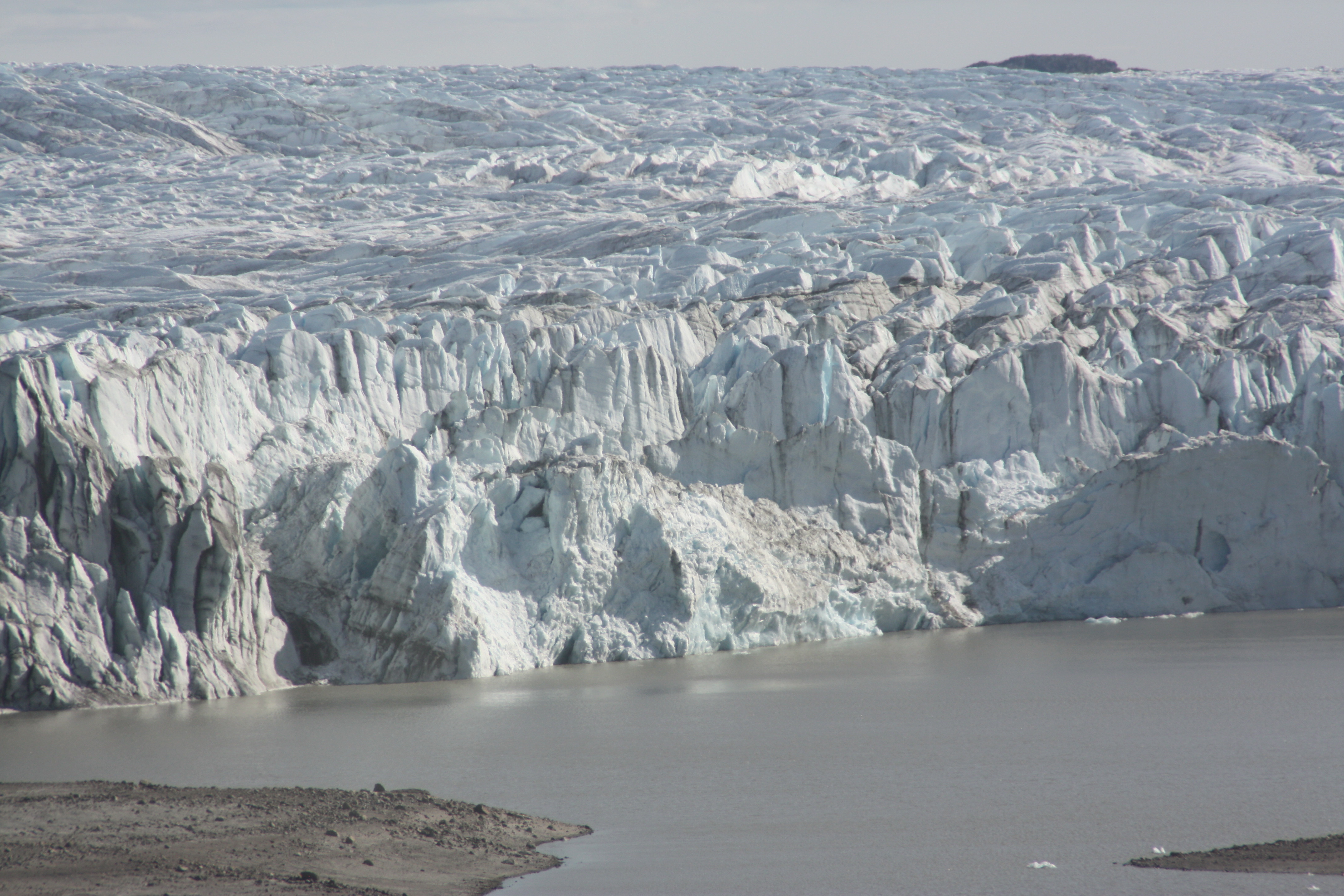
Small increases in global average temperature may eventually lead to sea level rise of six metres or more, according to evidence from past warm periods in Earth’s history.
That was the worrying message from a paper published in the journal Science this week. The researchers, part of the international “Past Global Changes” project, analysed sea levels during several warm periods in Earth’s recent history, when global average temperatures were similar to today or slightly warmer – around 1°C above pre-industrial temperatures.
I was able to talk briefly to one of the authors, Stefan Rahmstorf from the Potsdam Institute for Climate Impact Research (PIK), who was in Paris at the international scientific conference “Our common future under climate change” this week. (The article I wrote on that event, billed as the biggest climate science gathering ahead of the key COP in Paris in December, and the full interview with Rahmstorf are online now).
Rahmstorf described the new study on polar ice sheet disintegration and sea level as “a review of our state of knowledge about past changes in sea level in earth’s history, especially looking at all the data we have on past warm periods, due to the natural cycles of climate – the ice age cycles – that come from the earth’s orbit.”
He went on: ”We have had warmer times in the past, the last one was about 120,000 years ago, and we find that invariably, during these warmer times, the sea level was much higher. It was at least about six meters higher than today, even though temperatures were only a little bit higher, maybe one to three degrees warmer – depending on what period you are looking at – compared to the pre-industrial climate.”
Bad news for coastal dwellers
Not happy reading for anyone living close to the coast, if you look at temperature development today:
“Basically the message is: the kind of climate we are moving towards now – even if we limit warming to two degrees – has in the past always been associated with a sea level several metres higher, which would of course have catastrophic consequences for many coastal cities and small island nations.”
With warming currently on course to reach four degrees and more by the end of this century if greenhouse gas emissions continue on their present trajectory, this message adds yet another piece of evidence to motivate the world’s governments to come up with a new World Climate Agreement at the UN Paris summit at the end of the year – and to get moving towards a zero-carbon economy asap.
The interdisciplinary team of scientists concluded that during the last interglacial warm period between ice ages 125,000 years ago, the global average temperature was similar to the present, and this was linked to a sea-level rise of 6 to 9 metres, caused by melting ice in Greenland and Antarctica. Around 400,000 years ago, when global average temperatures were estimated to be between 1 to 2 degrees Celsius higher than –pre-industrial levels, sea level reached 6 to 13 meters higher. The lead author of the study, Andrea Dutton from the University of Florida, told journalists global average temperatures were similar to today during these recent interglacial periods, but polar temperatures were slightly higher. However, she stressed: “The poles are on course to experience similar temperatures in the coming decades”.
The Arctic is currently warming faster than the global average. IPCC estimates indicate that it could be almost two degrees warmer by 2100 compared with the temperature from 1986 to 2005 – IF the two-degree target is adhered to. Otherwise, it could rise by as much as 7.5°C.
Speed of sea level rise hard to predict
The authors of the study stress that the further back you go (they tried to estimate sea level as long as three million years ago), the more difficult it gets to calculate precisely how high sea level was, given that geological forces push and pull the Earth’s surface and can also cause vertical movement measuring tens of metres. This makes it hard to separate the geological changes in shoreline position from sea level rise caused by polar ice sheet disintegration.
Still, the authors point out that small temperature rises of between one and three degrees were, in the past, like today, linked with magnified temperature increases in the polar regions, which lasted over many thousands of years.
They conclude that even keeping to the overall two-degree warming limit is no guarantee: “Even this level sustained over a long period of time carries substantial risk of unmanageable sea level rise, not least because carbon dioxide remains in the atmosphere for over a thousand years”.
The researchers are not able to say how fast sea levels rose in the past, which would be a key piece of information for planning adaptation. Further research will be necessary for that.
Co-author Anders Carlson of Oregon State University says by confirming that our present climate is warming to a level associated with significant polar ice-sheet loss in the past, the study us providing “perhaps the most societally relevant information the paleo record can provide”.
Carlson heads the PALSEA2 Working Group, hosted by the Past Global Changes (PAGES) project, which used computer models and evidence from around the globe to come up with the conclusions in the study.
Stefan Rahmstorf draws a clear conclusion from the results of this research and other recent studies on instabilities in the Antarctic ice sheet and changes in ocean currents:
“This really calls for limiting warming to 1.5 degrees. And it is still feasible to limit warming to 1.5 degrees. But that requires a much stronger political will than we currently have”.
Still, the Potsdam professor is more optimistic than he used to be that advances in renewable energy and other technologies and growing awareness of the negative impacts climate change is already having around the globe could mean the UN Paris conference at the end of the year will mark a turning point.
Not that he thinks Paris can “do it all”. As you’ll see if you read my interview with him, he is hoping for the start of a process similar to the Montreal Protocol, where the original agreement was not too strong, but worked eventually by toughening up as it went along. Now that would be really good news. He told me it was time to “turn the tide of rising emissions”. Here’s hoping it happens in time to keep the sea level around the world well below that six metres that were there in the past.
The Arctic on the UN agenda
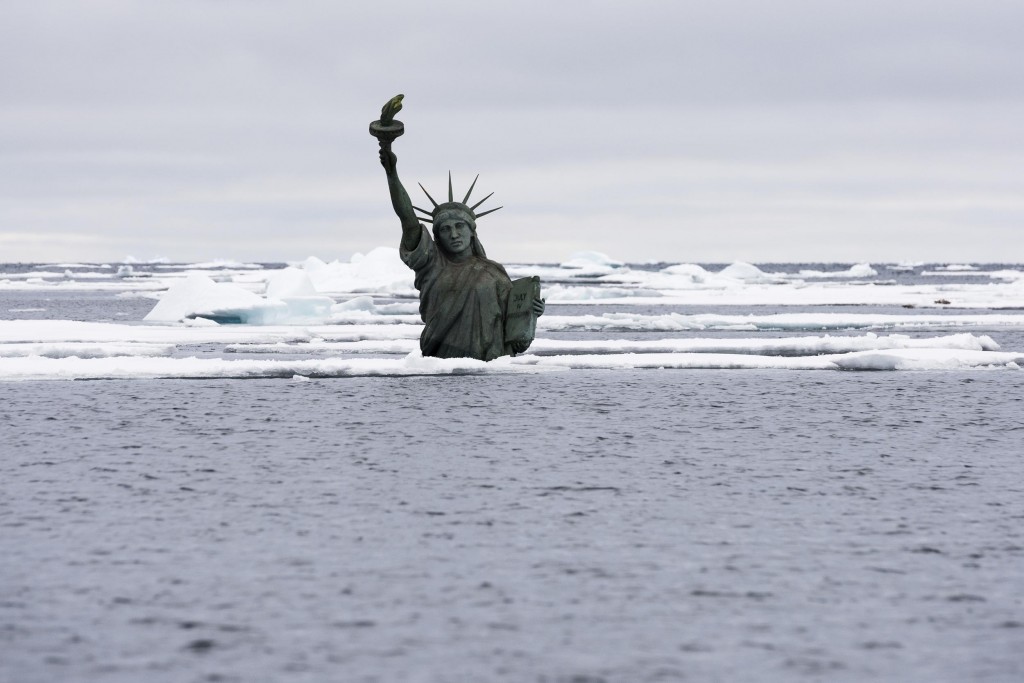
US icon sinking in melting ice? The photo was taken in the Arctic Ocean northwest of Svalbard the 7th of September 2014.
(Christian Auslund / Greenpeace)
To those of us who deal with the Arctic on a regular basis, the significance of the melting ice for the UN climate negotiations and vice versa is abundantly clear. But not everybody understands all the connections. A major media event like this week’s New York climate summit hosted by the UN Secretary General Ban Ki Moon in person was a fine chance to focus attention on the need to protect the Arctic. Greenpeace made good use of it, handing over a petition with six million signatures just ahead of the big event, and with hundreds of thousands gathered in New York for the Climate March.
It was timely in more ways than one, just as the latest sea ice figures were published to confirm the melting trend.
The petition calls for long-term protection of the Arctic, with the region warming more than twice as fast as the global average and opening the high north to shipping and commercial exploitation. Greenpeace and other groups are calling for a ban on oil exploration, which could endanger the fragile ecosystem. Experts also have safety concerns about increased shipping.
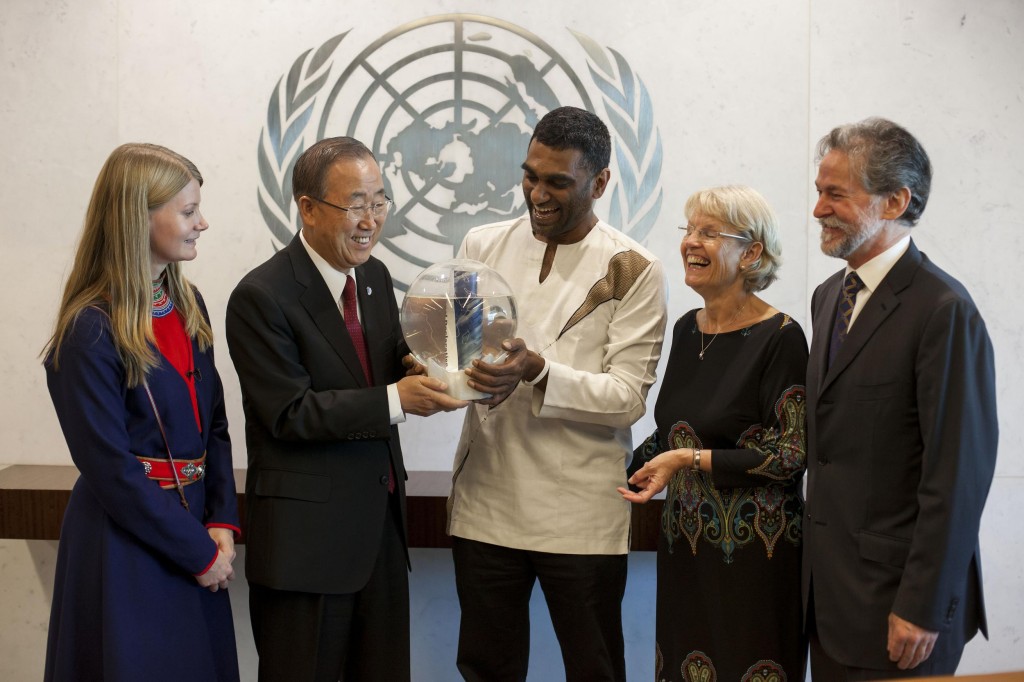
Ban Ki-moon receives the Greenpeace delegation with the petition. The delegation consists of Indigenous rights activist, youth leader and Saami politician Josefina Skerk, Margareta Malmgren-Koller, Greenpeace Senior Political Advisor Neil Hamilton and Greenpeace International Executive Director Kumi Naidoo. Photo: Michael Nagle / Greenpeace
Commercial development versus environment
Earlier this month, a survey showed that 74% of people in 30 countries support the creation of a protected Arctic Sanctuary in the international waters surrounding the North Pole. The study was commissioned by Greenpeace and carried out by Canadian company, RIWI. Around the same time, the Arctic Council, which combines the Arctic states and indigenous peoples’ representatives, currently chaired by Canada, supported the founding of a new business grouping, the Arctic Economic Council. Its aim is to promote the commercial development of the Arctic region. I wrote about this here on the Ice Blog and on the DW website.
Global responsibility for the Arctic
The UN Secretary General accepted the Greenpeace petition saying:
“I receive this as a common commitment toward our common future, protecting our environment, not only in the Arctic, but all over the world.”
Ban Ki-moon said he would consider convening an international summit to discuss the issue of Arctic protection. He also expressed a desire to travel aboard one of the organisation’s campaigning ships in the Arctic in the near future.
Greenpeace Executive Director Kumi Naidoo, who was part of the delegation, said: “The Arctic represents a defining test for those attending the summit in New York”.
He said leaders should bear in mind that concern for the rapid warming of the world was not consistent with planning oil and gas development in the melting Arctic.
The small delegation that met Ban Ki Moon included Indigenous rights activist and Saami politician Josefina Skerk, who last year trekked to the North Pole to declare the top of the world ‘the common heritage of everyone on earth’.
Skerk, a member of the Saami Parliament, said: “We, who want to continue living in the North, are gravely concerned about climate change and the destructive industries that are closing in. My people know and understand the Arctic, and it is changing in a manner, which threatens not just our survival, but the survival of people all over the world.”
Skerk said humans had created the crisis and had to take action to solve it.
“I urge the Arctic countries in particular to take a giant step up and I think the world needs to pay much closer attention to ensure that it happens. They might as well start here in New York.”
From Kiribati to Svalbard and New York
Melting ice especially from the Arctic Greenland ice sheet is raising sea levels around the globe, endangering low-lying areas. At the weekend, the President of Kiribati, Anote Tong, ended a Greenpeace-organized tour of glaciers in Norway’s Svalbard Archipelago. He said the trip to the Arctic ice had made a deep impression on him, which he would share with world leaders at the U.N. climate summit:
“It’s a very fascinating sight. In spite of that, what I feel very deeply is the sense of threat,” Tong said. “If all of that ice would disappear, it would end up eroding our shores.”
Kiribati is a group of 33 coral atolls located about halfway between Hawaii and Australia. Many of its atolls rise just a few feet above sea level.
In last year’s report by the Intergovernmental Panel on Climate Change (IPCC), experts concluded oceans could rise by as much as 1 meter (3.3 feet) by the end of this century if no action is taken to cut the greenhouse gas emissions causing global warming.
“It won’t take a lot of sea level rise to affect our islands,” Tong said. “We are already having problems.”
Sea ice minimum confirms melting trend
The New York summit coincides with the annual announcement of the minimum sea ice for the year, as the summer season comes to an end. The sea ice – in contrast to glaciers on land – does not influence global sea level, but is regarded as a key indicator of how climate change is affecting the region. This year the figure announced by the US National Snow and Ice Data Centre (NSIDC) was 5.01 million square kilometers. The figure is the sixth lowest extent since records began.
The minimum ever recorded at the North Pole was 3.29m sq km in 2012 – and the eight lowest years have been the last eight years.
Ice levels in the Arctic have recovered from their all-time low, but are still on a shrinking trend, said Julienne Stroeve of the National Snow and Ice Data Centre. ”We have been telling this story for a long time, and we are still telling it,” she said.
NSIDC records showed that, this year, ice momentarily dipped below 5million sq km to 4.98m on 16 September, but the official figure is taken from a five day average.
Satellite data shows that one part of the Laptev Sea was completely clear from sea ice for the first time this summer. One of the most important questions for climate scientists is how soon the Arctic will experience its first sea ice-free summer.
Rod Downie, head of WWF UK’s polar programme, said that this year’s new Arctic minimum should prompt new action from the leaders meeting in New York. He stressed the connection between the Arctic and weather conditions in other parts of the world:
“As David Cameron prepares to meet other global leaders at the UN climate change summit in New York, the increased frequency of extreme weather that is predicted for the UK as a result of a warming Arctic should serve as a reminder that we need urgent action now to tackle climate change,” he said.
The summit was a major PR event to draw attention to the need for urgent and substantial climate action. The accompanying protests around the globe show people are not happy with the slow pace of the climate talks and their governments’ efforts to reduce emissions. Of course there was little in the way of concrete pledges. Still, on the whole, I see it as a successful step on the way to a new climate agreement because it has put the spotlight on climate change at a time where international conflicts are dominating the news agenda.
More commentary on the summit from me here:
World leaders must act as climate takes centre stage
All-star gala puts climate back on the agenda




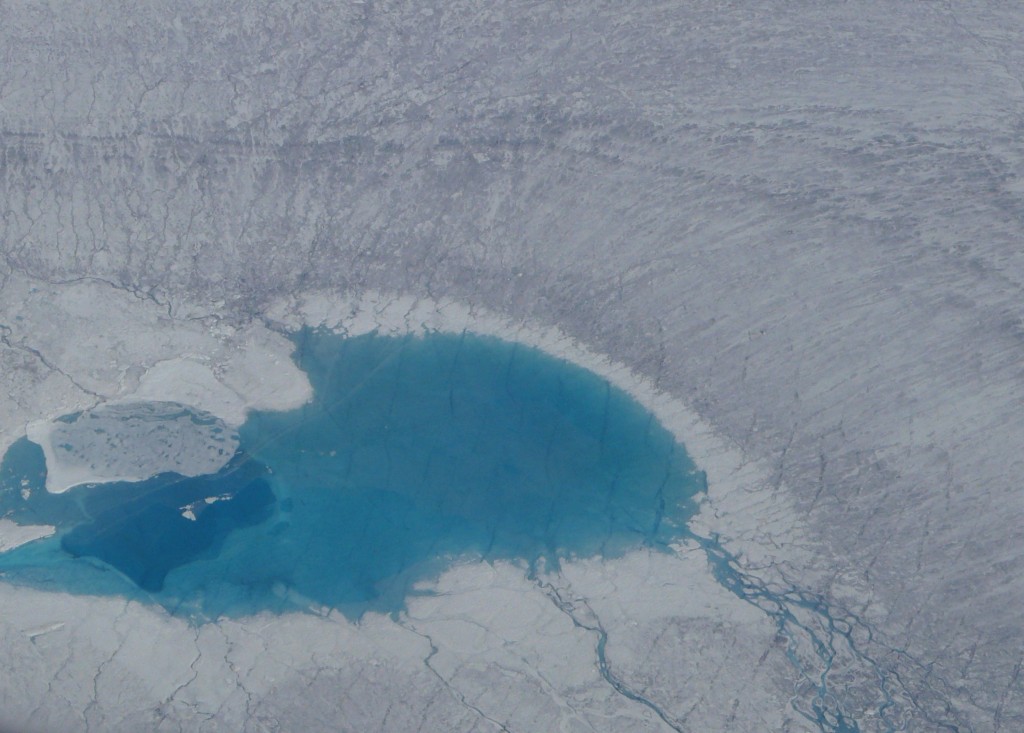
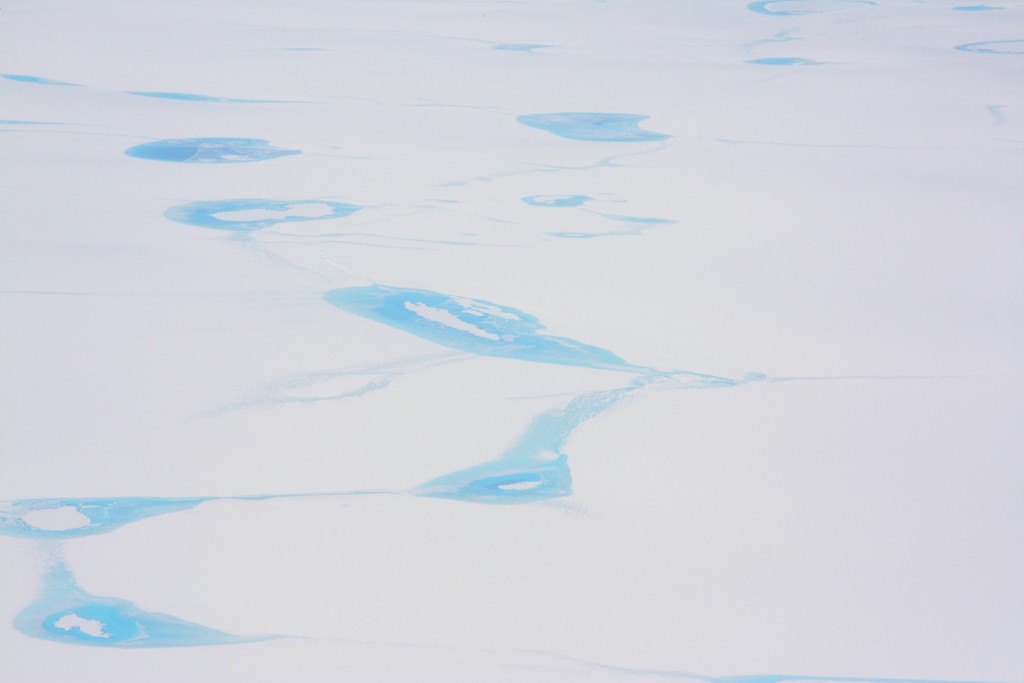


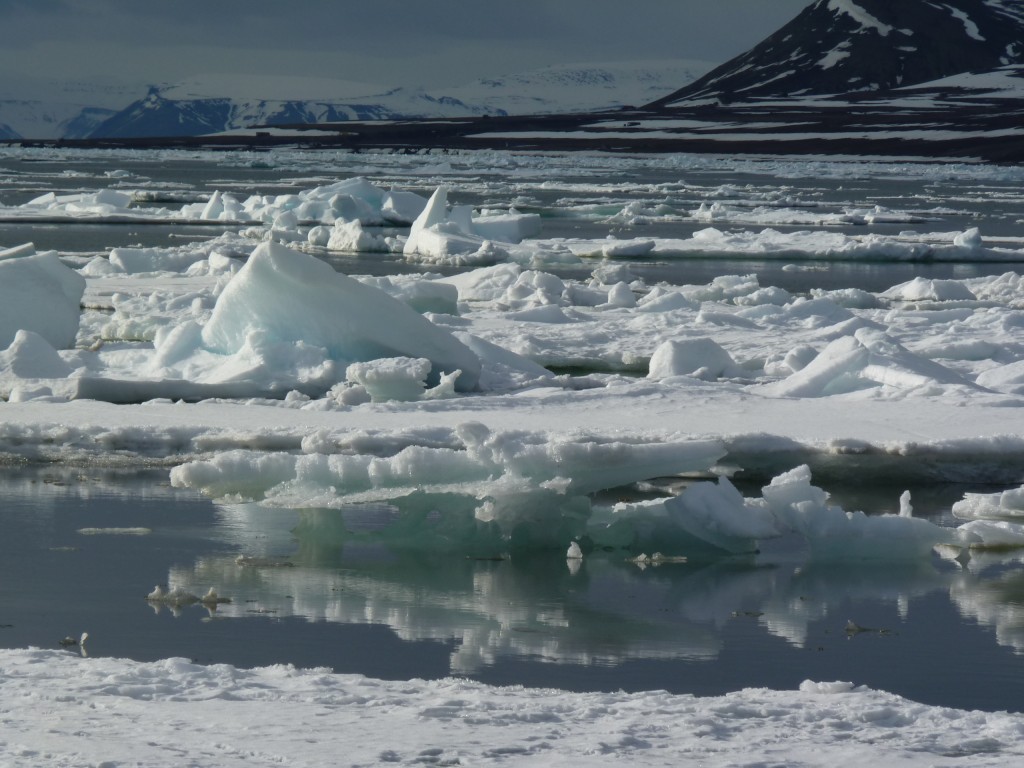
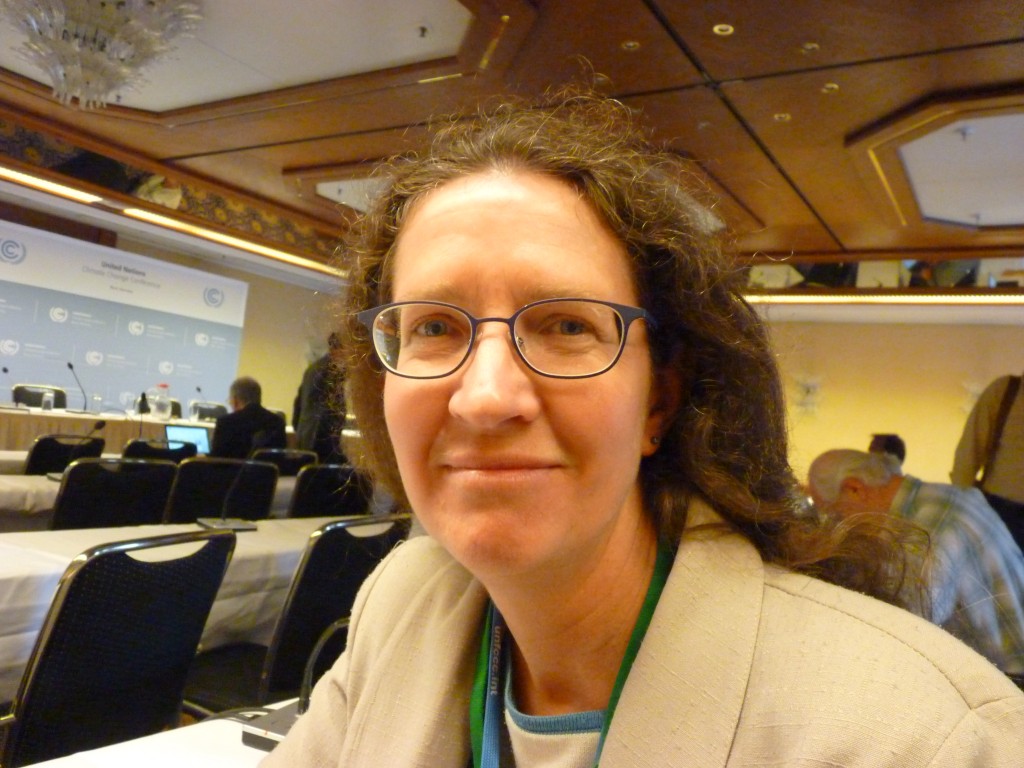
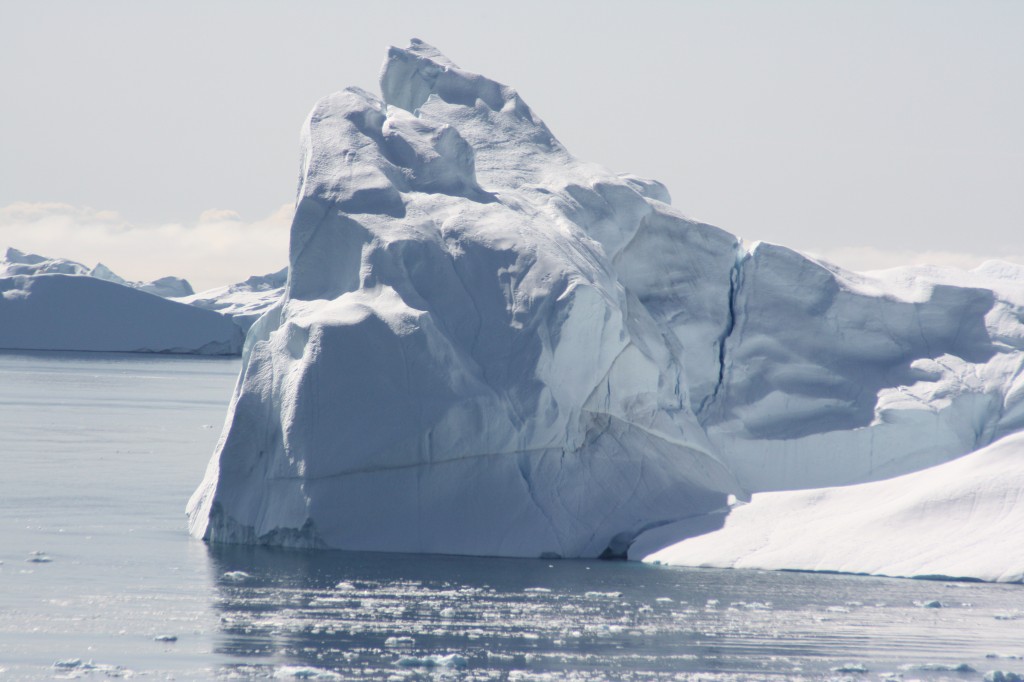

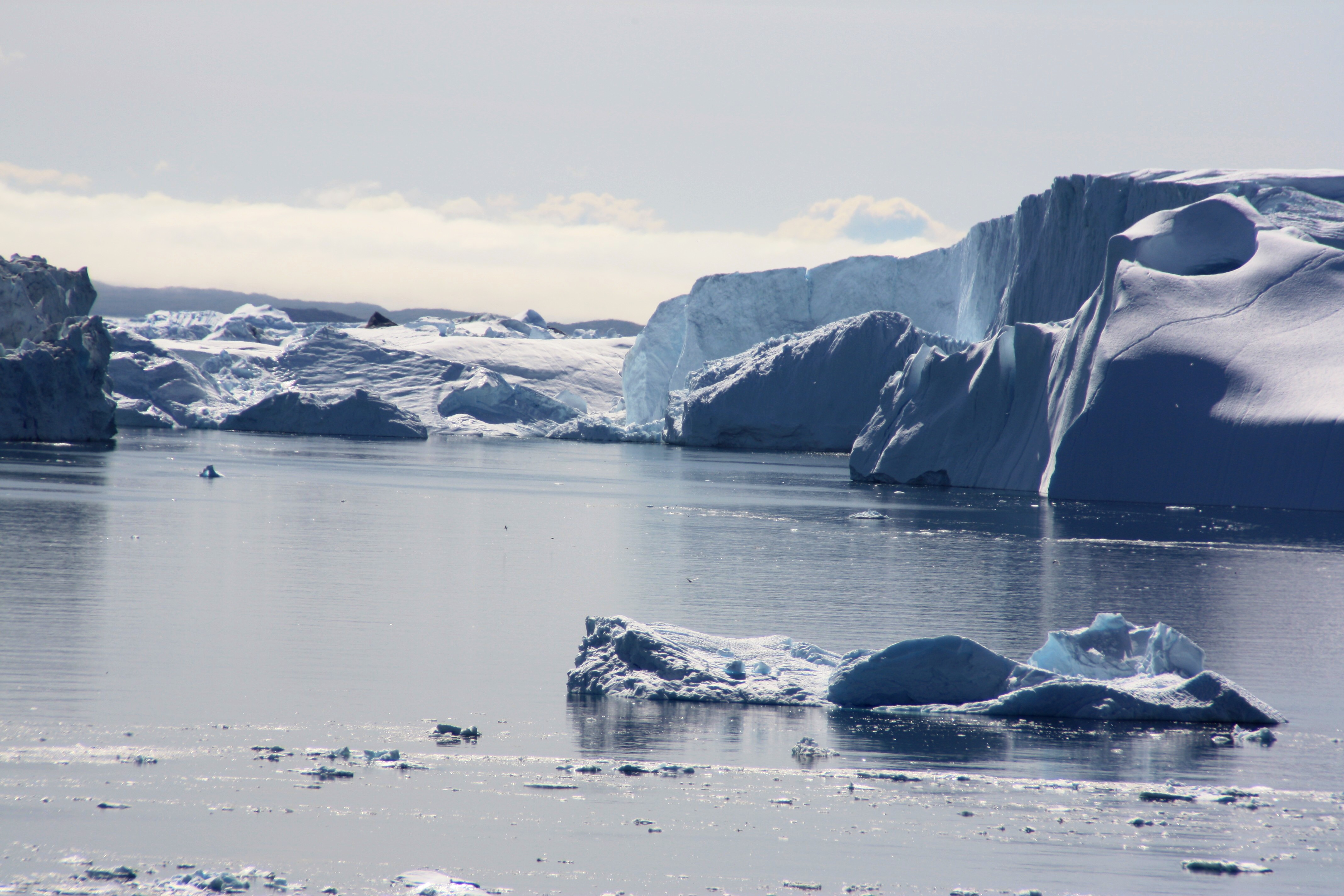
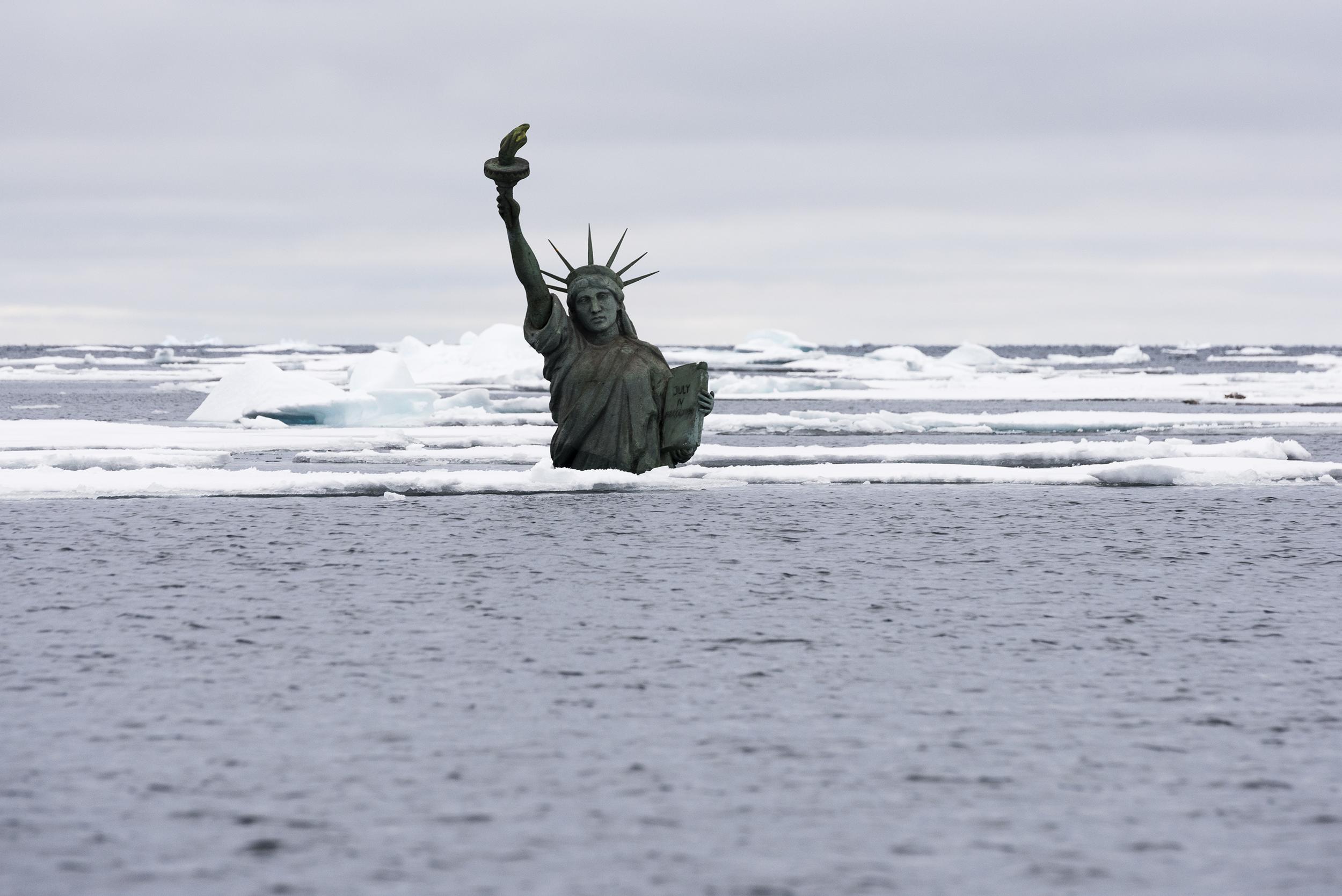
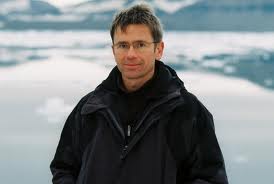

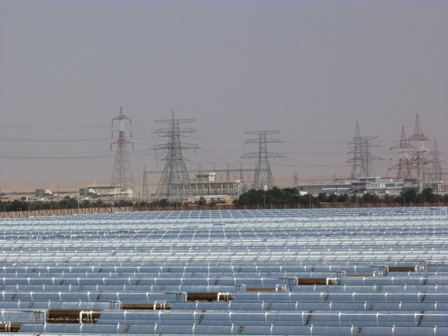

















Feedback